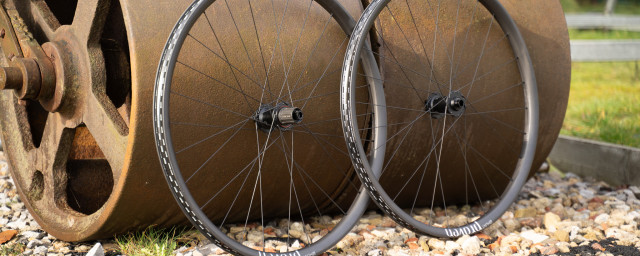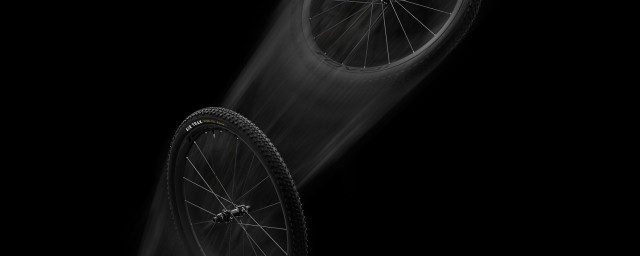First Ride: Kinesis Rise e-MTB hardtail - lightweight electric mountain bike with Fazua motor

This is the Kinesis Rise, an electric 29er trail hardtail from the UK-based Kinesis. Powered by a Fazua motor, it's one of the new breed of lightweight e-mountain bikes – born from the British love of a good hardtail, will we love a hard hitting e-hardtail?
- Specialized launches new Turbo Levo SL, a lightweight but less powerful e-MTB
- Opinion: A lightweight e-bike is in your future so you might as well get used to the idea now
- Buyer's guide: electric mountain bikes - all you need to know about e-bikes
Getting down to the tech details first, the Fazua motor is a small, sleek package, giving 400W of power and 55Nm of torque when connected to the 250Wh battery.
Our test bike came with the Black Pepper update, which gives the rider more control – by plugging the drive system into your computer you can alter the assistance levels and change the ride feel via parameters such as ramp up. This alters the relationship of the exertion of the rider and the assistance given.
As standard, the Rise has three modes. Breeze mode gives up to 125W of power, River mode goes to 250W and Rocket mode gives the full 400W. You select this via a small touch-sensitive unit – yes, it works with gloves – in the top tube. It looks neat but does mean taking your hand off the bar, which leaves less room for frantically grabbing Rocket mode halfway up a steep incline.
Next to these buttons sits the battery indicator, which changes colour to indicate mode – green for Breeze, blue for River and red for Rocket.
That 250Wh battery is smaller than the Specialized Levo SL (360Wh), but on par with the likes of Lapierre's E-Zesty. I weigh 60kgs and clocked up 41km with 750m of climbing in Breeze mode, only used Rocket on steep inclines, and was left with 5% battery. The Rise is capable of some half-decent rides if you use the most economical mode, but if you ask for more assistance, ride length will diminish quickly.
Kinesis and Fazua pull a useful trick here, though – the battery and drive unit can be fully removed from the bike and replaced with a blanking plate, allowing you to ride unassisted. This drops 2.3kg from the 18.8kg weight of the whole bike. De-motorvate it (that's a word now, okay?) and there's no drag either; the Rise simply feels like a slightly heavy hardtail.
The motor is particularly smooth in its default settings, though with the Black Pepper update you could potentially make it more aggressive. As stock I found the motor loved high cadence – more so, in fact, than any other e-bike I’ve ridden. Dropping the cadence soon feels like stirring porridge with your cranks, so it's best kept spinning.
While we're talking oddities, if you leave the bike off for more than eight hours, you have to take the whole system out of the down tube and press a button on top of the battery to turn it back on – that’s crazy! Here's hoping that goes in an update.
So, that's the 'e' bit. Now for the 'bike'. The Rise is an aluminium 29er hardtail, with fairly progressive geometry. Its 130mm fork sits in a 66.7 degree headtube, reach is 461mm on this size L2 (medium equivalent), the seat tube is a short 414mm and the effective seat angle is 75.5 degrees.
It comes with a 170mm dropper post, too (or 150mm on the small L1 bike).
The geometry, along with that 130mm X-Fusion E-Slide fork, makes for some decent trail performance. I’m not sure it’s quite the aggressive hardtail it's billed to be – the weight and stiffness curb enthusiasm for really gnarly riding – but this bike loves flowy singletrack, whether it's off-piste or in the confines of a trail centre.
The high weight means the bike soon gets hung up when the going gets rough, and the Rise doesn’t have the grip of a full-suspension bike up rough climbs. Kinesis has tried to manage this with voluminous, 2.5” Maxxis tyres and 35mm (ID) wide Sector 9E rims, and the result is a relatively comfy place to spin out the miles. When it is rough there is a certain rattle coming from inside the frame, joined by a squeak which sounds like plastic moving whilst pressing against another material, after speaking to Rory at Upgrade he says "the drive pack may have just needed a simple lube where the it interfaces with the gearbox.There is also a seal where in the gear box area and we have experienced this making a noise if it gets really dry like in the hot weather. Again a light lube works well." This makes perfect sense and tally's with what I heard from the bike when ridden in dusty, dry conditions.
In fact, my mind did start to wander to thoughts of a light build and more XC-orientated nature. The super-stiff frame, short front travel and the steeph(ish) head angle – plus the efficient seated position and intuitive motor – all lend themselves very well a racier build that can still manage some technical terrain.
Talking of build, there are currently three specifications available. This one gets you SRAM GX Eagle for £3,500, while the second wears Shimano SLX and costs £3,200. The third is GX Eagle again, only with Innegra wheels and a £4,400 tag.
All bikes get room for 2.6" tyres, and come with a Maxxis Minion DHF front tyre and a Maxxis Aggressor rear. They also all get the X-Fusion E-Slide 34 fork with a 44mm offset, an X-Fusion Manic dropper post, and brakes courtesy of TRP in the shape of the four-piston Slate T4.
October 2020 will see a new spec, the Kinesis Rise Pro introduced, featuring SRAM and Rockshox parts; a Rockshox 35 Gold RL (130mm), 12 spd SLX drivetrain, SLX 4 piston brakes and interestingly a new, smaller Fazua Handlebar Remote meaning you can swap modes without taking a hand from the grips.
Rory from the Kinesis distributor Upgrade says the new Kinesis Rise Pro bike in the above spec gets a 65.7 degree head angle something that has been made possible by changes in the frame itself.
As it is, the Kinesis Rise is a rather unusual bike. It couples trail geometry with solid spec choices and a natural-feeling motor at a reasonable price – full-suspension options from the likes of Canyon or YT are around £1000 more.
In this guise, the Kinesis Rise will appeal to a fairly niche market, but with a few spec changes I reckon its got real potential as a mile munching XC e-bike. Will it get them? Check back and find out!





























